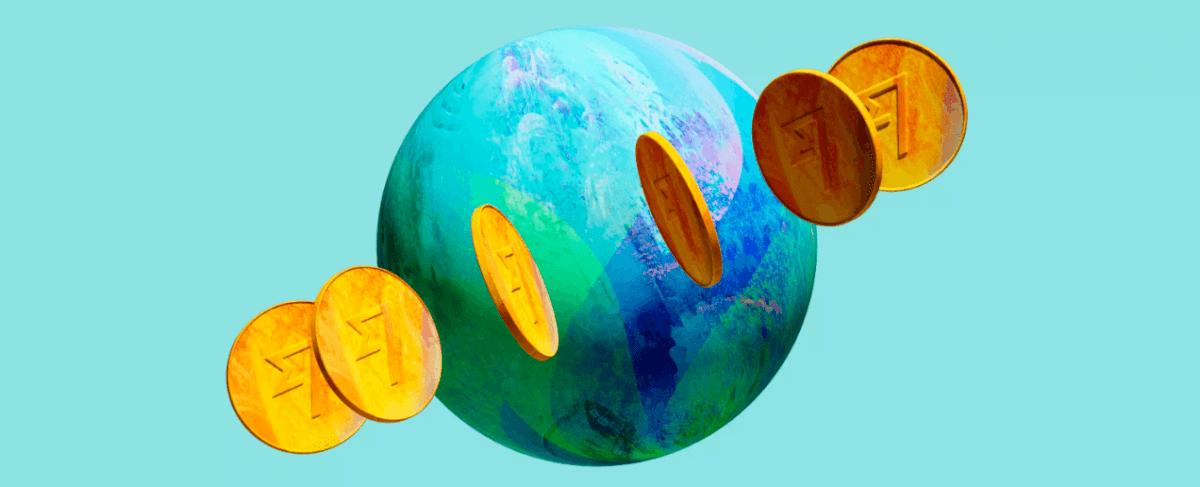IRS exchange rates: Guide to foreign currency conversion for US taxes
If you’re a US expat or have foreign income, you have to report your assets in USD. Find out how the IRS exchange rate works in this guide.

If you’re looking for ways to save and invest, you might be wondering: how do US savings bonds work?
This guide walks through key questions including:
And as a bonus, we’ll also touch on Wise - as a smart way to manage your money if you need to hold, send, spend, exchange or receive payments in foreign currencies.
When you buy a US savings bond you’re lending money to the US government. In return, the government promises to pay your money back when you redeem your bond, including interest at an agreed rate, and subject to meeting eligibility criteria.
All of the details in this guide are correct at time of writing, 31st May 2023 - older bonds, or future issued bonds in any series, may have different terms.
The US government has been issuing savings bonds since 1935. Sometimes bonds were issued for general funds, and sometimes for specific purposes, such as to fund the Post Office or to contribute to the Armed Services. Different bond series have their own features and benefits - the bonds being issued today are in Series I and Series EE. Bond Series HH was stopped in 2004, but these bonds earn interest for 20 years, so some are still active now.
Today, you can buy savings bonds from as little as 25 USD, and - depending on the series you hold - they’ll earn interest for up to 30 years. You can cash in your savings bonds earlier than the 30-year deadline, but it’s worth remembering that if you cash in the current bond series (Series I and EE) within 5 years, you’ll lose the last 3 months of interest you earned.

Wise is a Money Transmitter specializing in low-cost currency conversion, international payments and multi-currency accounts you can operate with just your phone. If you’re looking for smart ways to manage your money efficiently, check out the Wise Account as a simple way to hold, send, spend, receive and exchange foreign currencies.
You can open a Wise account online or in the Wise app, to hold 40+ currencies, send payments to 80+ countries, and get currency exchange which uses the mid-market exchange rate with low fees². You can also get a linked Wise international debit card for easy spending in 150+ countries, and local bank details for up to 9 currencies, to get paid from 30+ countries conveniently.
If you’re a frequent traveler, if you’re paying or getting paid in foreign currencies, or if you love to shop online with international retailers, Wise could help.
Please see Terms of Use for your region or visit Wise Fees & Pricing for the most up to date pricing and fee information.
At the time of writing, the US government is issuing bonds in 2 series: EE Bonds³ and I Bonds⁴.
EE Bonds issued today have a fixed rate of interest but come with a guarantee that they’ll double in value over the course of 20 years. You can only get electronic EE Bonds, to a maximum of 10,000 USD in value every year.
I Bonds are issued in both paper and electronic form. You can use your IRS tax rebate to buy paper I Bonds. I Bonds have a fixed interest rate plus a rate based on inflation - the overall rate is reset twice a year. You can buy up to 10,000 USD of electronic I Bonds, and 5,000 USD of paper I Bonds, annually.
You can buy savings bonds most conveniently by registering a Treasury Direct account. In some cases you can also buy paper bonds - such as the I Series bonds available today.
You can cash in an I or EE Savings Bond issued today, once you’ve earned it for a year.
Electronic bonds can be cashed in by logging into your Treasury Direct account⁵. If you hold a paper bond you may be able to cash it in at your bank, or you can send it with a completed form FS1522, to claim directly from the treasury.
Learn more about how to cash in savings bonds here.
Not sure if US savings bonds are for you? Here are some pros and cons to consider:
Savings bonds aren’t your only option if you’re looking to invest and grow your money.
Here are some resources which look at alternatives to savings bonds, which you might want to consider when researching the best picks for you:
US savings bonds offer low risk ways to put your money into an interest earning account, with different bond types available, from as little as 25 USD. However, they’re not right for everyone. As with any investment, it’s important to do your research before you buy US savings bonds, so you know you’re getting the right product for your needs. Use this guide as a starting point, and get professional advice if you’re not sure which savings and investment vehicles might suit you best.
Series EE and Series I savings bonds issued today will continue to earn interest for up to 30 years. However, you can cash in your bond once you’ve owned it for at least a year. Cashing in having owned your bond for under 5 years means you forfeit the last 3 months of earned interest.
Savings bonds don’t expire as such, but they may stop earning interest after a certain period of time, depending on the bond series you own. Treasury Direct has tools available to search for matured bonds⁶ if you think you may have some, so you can cash them in if eligible.
Savings bonds issued by the US government are pretty safe, but you’ll need to do your research to make sure you understand the risks involved. Cashing in a bond early, for example, might mean you forfeit some interest earned.
At the time of writing, the EE Bond series bonds being issued are guaranteed to double in value in 20 years - so if you bought a 200 USD bond in this series today, it should be worth 400 USD in 20 years.
However, the value of your savings bond depends on the specific bond you have - if you hold an electronic bond you can log into Treasury Direct and see the value of your bonds. Otherwise, there’s a handy savings bond calculator⁷ you can look at to calculate the value of paper bonds.
At the time of writing, EE Bonds are being issued with a guarantee they’ll double in value in 20 years. Other bonds have their own earning rates, so the actual value of your bond over 20 years will depend on the details of the specific one you hold, and when it was purchased.
All sources checked on 24 July 2023
*Please see terms of use and product availability for your region or visit Wise fees and pricing for the most up to date pricing and fee information.
This publication is provided for general information purposes and does not constitute legal, tax or other professional advice from Wise Payments Limited or its subsidiaries and its affiliates, and it is not intended as a substitute for obtaining advice from a financial advisor or any other professional.
We make no representations, warranties or guarantees, whether expressed or implied, that the content in the publication is accurate, complete or up to date.

If you’re a US expat or have foreign income, you have to report your assets in USD. Find out how the IRS exchange rate works in this guide.

Looking for Remitly alternatives? Explore other reputable competitors in the international money transfer industry & discover trusted platforms like Wise.

Learn more about how to pay and explore the top payment methods in Egypt

Learn more about how to pay and explore the top payment methods in Niger

Learn more about how to pay and explore the top payment methods in Norway

Learn more about how to pay and explore the top payment methods in Sweden